Grandpa's Tomcat >Burgess Dune AH-7
These machines were used by the US Navy during the early years before WWI. The strange looking aircraft was a pretty interesting design for it’s time, it even could have been called a flying wing, cause there was no tail at all. Another feature for these aircrafts was the then completely unusual sweepback of the wings. The aircraft turned out to be pretty successful, most of all because it was, according to old reports, very easy to fly and very stable. The pilot was even able to fly this machine “hands-off”, a feature completely unusual to all aircrafts during these times and a sure way to ruin your whole day if you ever tried to do so. Due to these the Burgess Dune was the first aircraft of the US Navy which was used for aerial gunning. Unfortunately I have not been able to find a single photo about these tests, so I cannot say if there was simply an observer, shooting with a rifle from his seat or if there was some kind of a machine gun mount.
Building this little machine was an experience I will not forget for a veeeery long time. My first idea of this aircraft (or should we call it a flying machine) came up, when I saw a picture of this machine in a book. It was quite interesting and I cannot explain why, but I fell in love with this strange machine instantly. Years later, I was talking to my then favourite dealer of plastic kits in Great Britain, I told him about this aircraft and he told me that there is even a kit available. I placed an order for a couple of other hard to find models and sure enough when I received them there were not only one but three of these machines in the box. The price as far as I can say now, was not that bad, but the quality of this kit was simply devastating! It was a vacu-form kit and sure, no one can expect of this a “high-quality-kit” but one can expect at least something which is useable. In this case everything and I mean everything was scrap and the only thing I could use it for, was to take some measurements from those “parts”. (and to be honest, I’m not entirely sure if these would match the original)
The wings which are about the only “major” part of this aircraft were build and formed from plastic sheet and all the rest was built the same way. So at the end the entire aircraft was scratch build. But the first problem turned out to be the 2 wings, which had to be connected by some wing struts. Due to some reasons those struts did not hold together properly and the entire 2-wing section got warped. Even after several attempts the same happened again and again. At the end I was so frustrated, I put the whole “model” on my shelve, where it rested for almost 2 years. Only after that I decided to give it another try. This time I decided to build it entirely different, cause meanwhile I was able to find a few more photos of this aircraft, showing it without any fuselage and with only a single seat for the pilot. And even the problem with those 2 wings finally worked and they looked pretty good.
In the kit was something included which (with quite a lot of imagination) should have been a radial engine. I replaced this with a small inline engine from Aeroclub as well as the propeller. The kit version was supposed to be a twin seater with some kind of fairing for the pilot and the observer as well as that “should be radial engine” In my case I decided to build the much more interesting version with only a single pilot and no “fuselage” at all. That way I had to build the entire “cockpit” scratch with a small seat, steering column, rudder pedals and some small wheels for trimming. Off course because there is no fuselage at all, all the control wires for those rudders had to be build as well. The rest was pretty easy, the centre float was build of plastic sheet as well as the two smaller floats under the rudders. Some small details like the water-cooler and the gasoline tank were added, all scratch build off course. At the end the only thing left was the rigging. This “only thing” was some kind of nightmare and the model-aircraft was more than once close to fly right out of my closed window. But I kept my patience and at the end I was able to colour the whole “thing” The early kind of markings were “handmade” with a very small brush. After that I decided to give this little bird some kind of background in form of a small diorama. The little house was made entirely scratch, complete with the roof and some miscellaneous parts around it. The water is a 2-component transparent resin. The stone walls are made from plaster and at the end I put a single figure from Airfix on the Diorama.
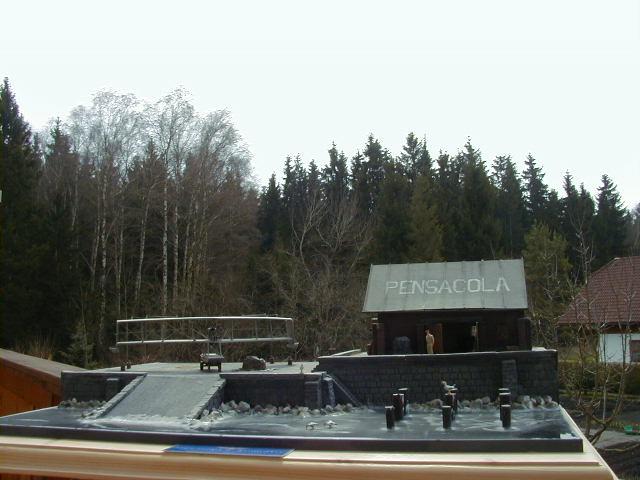
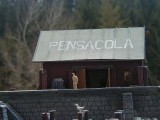
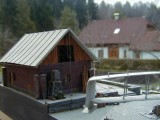

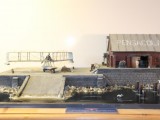
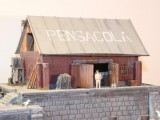
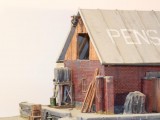
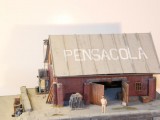
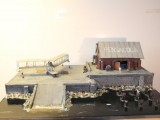

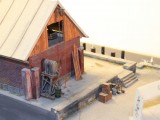
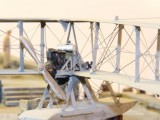
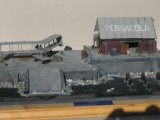
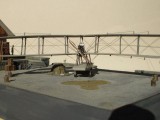
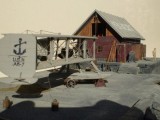
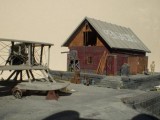

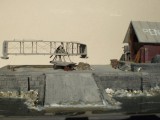
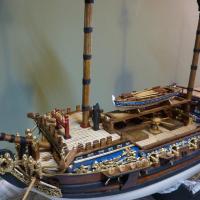
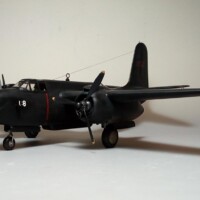
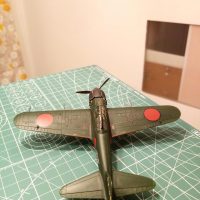
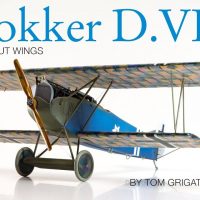
Well I must say I've never seen something of this nature modeled before. You've done the scene justice - that's for sure. Nice job, sir.
Great work sir, fine build of a very unusual plane.
Great diorama too.
Well done sir
Rene', this is one reason why modelling is so fun and interesting, as you get to constantly learn new stuff, this is fascinating. Your model is excellent, really nice work.
Thank you for the great work and the insight into early Naval aviation.
Nice work! That is one interesting flying wing(s)!
Rene, never thought I'd see one outside a case at the Smithsonian.
Great work!
Outstanding diorama of the kind dear to my heart. Fascinating subject matter and a fabulous representation of the subject matter. There should be a diorama museum for such work but from what I have seen, it would take something the size of the Smithsonian to house them all.
Museums have used the diorama for many years to give the best historical illustrations of history. So many of the diorama I see modelers creating far exceed the quality of those found in museums. Perhaps it is because they are labors of love instead of commissioned works.
Sure, the full scale uniforms and equipment are there, but it's the diorama that brings them to life. When I was a kid the full scale stuff was fascinating, but it was the diorama that really held my attention. In that regard, the only thing that has changed is that the diorama I am building is the one that now holds my attention.
As for your comment, "It was quite interesting and I cannot explain why, but I fell in love with this strange machine instantly."
This attraction may be something from a past life. Long ago I came across a striking, full page photo of Colin Kelly in a book I was reading. Kelly was was distinguished by the fact he was among the first Air Corps combat casualties of WWII when Saburo Sakai shot down his B-17, the first one lost in aerial combat during World War II.
The photo held a strange, strong attraction that I puzzled over for many years. Later I realized that at some point in my past life, I had known this individual. Research on my own pre-war demise in a stall/spin flight training accident led to to the conclusion that Kelly and I had been in the same class at Randolph. It was possible we had been friends.
Be careful what you do in this life because you will have to deal with the consequences in the next.